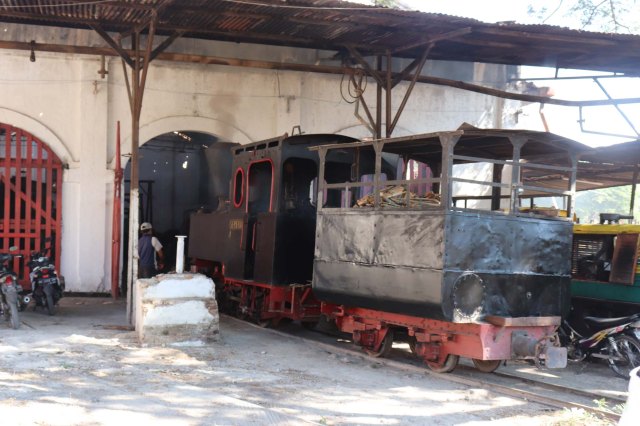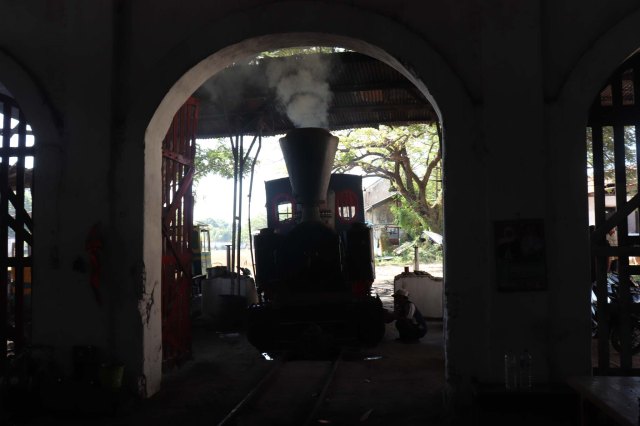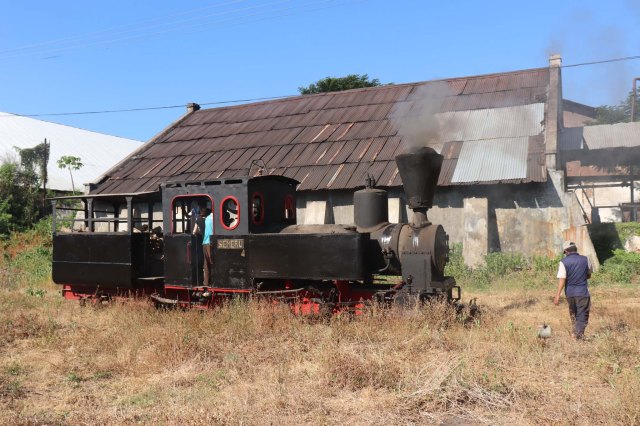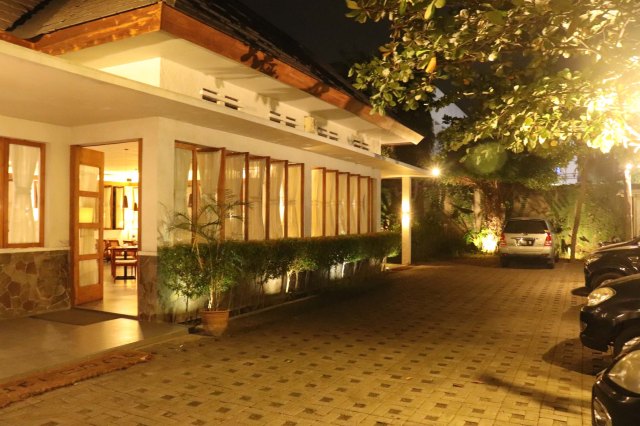After 2 consecutive mishaps on the sugar mills that we visited earlier, we begin to wonder if our journey might be jinxed? We have high expectation over our journey, yet neither places deliver answer to our expectation. The trip to Kedawung was slightly a disappointment owing to the breakdown of the steam locomotive on the last minute. Semboro was even worse as the fireless locos weren’t even working!
So Olean will be the final straw. It will be a make or break moment of our tour. The success of our visit there will determine whether if the tour has been successful or not.
To add my pressure, none of the employees in Olean can be contacted. Normally I would notify them if I would come to the place, so it wouldn’t take too long for them to start the locomotive. But today (26th June 2019), none of them can be contacted! And since our trip to Olean has been postponed by 2 days, there is a belief that their steam loco might not be available for tour. This is truly frustrating!
Thanks to these unfortunate factors, what was supposed to be a pleasant epilogue part of our trip turned out to be like a final battle to keep the tour reputations intact. According to initial plan, we supposed to go to Gumitir where we supposed to visit coffee plantation and doing trainspotting at Mrawan tunnel. In the end none of them materialize and we have to settle our score in Olean.
Once we finished our breakfast and checking out, we head straight to Situbondo. The journey to Situbondo is largely pleasant. The traffic isn’t too crazy and there are no traffic jams at all. Both Christian and Dasha are able to enjoy the scenery during our journey to Situbondo.
After about 90 minutes of driving, we finally arrive at the town of Situbondo where we go straight to Olean sugar mill.
Upon arriving at Olean sugar mill, we are greeted by the sight of a rather quiet place. Even the smokestack doesn’t puff any smoke at all! Have the mill been closed like what was planned a few years ago?
After getting cleared to enter, we go to the management office where we are greeted by the sight of largely empty office. I go to one man who sits in one corner of the office, and showing the permit letter. Upon reading the letter, he directed me to go to engineering office which is near the yard.
As we got near, we’re surprised that none of the machines are in working condition! But upon looking some technicians working to fix the engine, we are certain that this mill is still in operation.
Once we enter the engineering office we are warmly greeted by the staffs there. One is Haji Buhari who is responsible for the railway operation in Olean sugar mill, and other is pak Eko who is responsible for steam engine operation at the mill.
We told them our intention to hire steam locomotive for excursion. At first they are puzzled and a bit shocked. “Why didn’t you told us before?” ask Haji Buhari. I told him that I’ve actually made request for permission and granted by the head office. But due to Christian’s illness on the designated day, compounded by my inability to contact anyone in Olean, this led to miscommunication.
He tells us that the mill is currently not working as they haven’t start the milling season. This is quite surprising as other mills have started their crushing, and even entered the second month of milling. The reason behind such lengthy delay is the fact that Olean only has small estates and old machinery that require extra work to maintain and repair.
But to our surprise, and obviously joy, is the fact that the steam locomotive is available for charter today! That is amazing, considering of our rather impromptu visit. Haji Buhari summon his crew to start preparing the locomotive for us. We can’t conceal our happiness upon learning that our unfortunate streak came to an end on this historic mill.
However, Haji Buhari also added that the steam locomotive can only be used inside the mill as the field lines haven’t been prepared for operation. Since it is pre-harvesting period, they haven’t deploy team to check the field lines condition. So our train will only go back and forth inside the mill.
While waiting for our locomotive to be ready, pak Eko invited us to tour around the mill.
Unlike most sugar mills in Indonesia, Olean still operates and maintain machines that dating back from turn of 20th century.
The oldest part being this machine which was built in Lille in France, back in 1880s.
We are accompanied by pak Eko. He is the senior machinist (a person in charge of steam engines operation) of Olean sugar mill. He has been working in Olean since 1991. He started his career as apprentice technician who gradually reach higher rank. He recalled the days where he had to work hard to repair machines, and sometime sleeping inside the giant piston chamber.
He also recalled the tale of how he met one Dutch lady who was born in here. Her father worked in mill’s management during 1940s and 1950s. She spent most of her childhood in Olean before his family was forcibly relocated to Netherlands in 1950s. When she returned back to her childhood home again, after decades of absence, she became too emotional. She ran around the place trying to search her childhood home (which thankfully still stood) and her friend’s houses. Pak Eko likened her to small toddler running around, despite the fact that she was already in her 60s during that visit.
Pak Eko also delivering one unpleasant reminder that the future of Olean sugar mill might be under threat. He said that this year could be the last milling season for Olean. Once the upgraded Asembagus sugar mill start operation, all of the sugarcane supply in Situbondo regency could be processed there, leaving nothing for the rest of Situbondo.
The heritage preservation effort on Olean sugar mill seems to be in doubt too. Although previous PTPN XI plantation company management has made effort to advertise it as “Argowisata” tourist attraction, very little tourists paid visit the place. And the new management which was sworn in in 2019 seems to be uninterested with Olean’s heritage status.
The narrow gauge railway operation in Situbondo could be under threat too. The current regent of Situbondo is known for being anti-railway. During his first tenure, he had successfully led a campaign that causing the closure of Panji sugar mill’s field lines network. His reasoning is the lines are too close to the main road. Sometime it would cross the main highway in many places. His next victim is Asembagus sugar mill. Since it crosses the main road, it was eventually closed at the end of 2018 harvesting season. And the next in the chopping block could be Wringinanom’s southern field lines which also crosses the main highway. Although none of Olean’s field lines crosses the main highway, it could disappear too if Olean sugar mill closed.
We walk into Olean’s locomotive shed where number 4 is already brewing.
It’s truly a relief to see her in running condition. Hopefully she wouldn’t let us down today.
While waiting for the steam locomotive to ready, we browse inside the locomotive shed.
I notice that now they have relocated all of steam locomotives to the left of the building.
Christian says that the number 5 is actually in a good condition. With a little bit of repair works, she could be brought back to service like her sister.
However, I also notice that one of the Maffei locomotives wreck is now gone. Up until last year, there were 2 of them where one still have its cab while the other was just the frame with portion of the boiler. Now only the one with the cab is still there.
One of the engineer tells us that the steam locomotive is now ready.
In a few minutes, she slowly rolls out of the locomotive shed and into the yard.
The mechanics makes some adjustment on the track, so she can be used for photo running.
The crew moves the locomotive to the mill’s direction.
Once there, they switch the track.
As you can see here, the mill is pretty much inactive.
Due to its rarity, a steam locomotive movement would draw attention from even the mill employees themselves, especially the younger generations who start working when the mill gave up the regular steam locomotive workings not so long ago.
From this angle, you can see how old this mill is.
Although they do periodic maintenance on the mill, they seem to never bother to repair its roof. Maybe since rainfall in Situbondo is not as frequent as in other places in East Java, they don’t put high priority on roof repair on this part of the mill.
Although this mill still operates their railway system, complete with the field lines network, I’m a bit puzzled by the lack of sugarcane wagons in the yard. Normally there supposed to be a lot, but so far I only see a handful of them. I wonder where are the rest of them? Have they been scrapped? Or maybe already delivered into the field in anticipation of harvesting? Or maybe borrowed by neighboring Wringinanom sugar mill, where its field lines is connected to Olean’s?
No.4 slowly pushes some wagons out of the way, so she can be ready for photo running.
Christian is truly excited by this. He has been waiting for this special moment.
While waiting for the locomotive to be ready, I zoom out my lens so we can get wider view of the yard. On the right are the former passenger wagons which are constructed from modified sugarcane wagons. They were first used in 2016, and initially were popular. But in recent years, I haven’t heard any news about the tourist train operation in here, other than chartered steam locomotive workings.
And a few minutes later, the first photo running begins!
The drivers know that photographers want to see thick black smoke, so they decided to deliver some.
I move to a higher ground to take the second photo running. It’s truly marvelous sight!
After successful photo running in here, we decide to conclude our tour here and bid farewell to the hard working crew who have made our visit in here a successful one. We are very thankful for their effort to make steam locomotive running happen.
We return back to our car where after packing our gears and putting them in the boot, we head straight to Ketapang ferry harbor.
Along the journey Christian expresses his gratitude that Olean have saves his honeymoon trip from total disappointment. He is truly glad that his wish to see steam locomotive in Java comes true. He hope that in the future all of the steam locomotives that fail to work, like in Kedawung and Semboro, can resume their duties again.
Although our trip to Ketapang is largely peaceful, there are certain moments that I fail to photograph as I have to do the driving. The first one is the appearance of a steam locomotive displayed on roadside in Situbondo. Apparently the last surviving steam locomotive in Panji sugar mill is now displayed in a café adjacent to the mill. And second, when we pass through Asembagus sugar mill, we also see another steam loco derelict in the field line.
We arrive at Ketapang ferry harbor at dark. Once in here, I bid farewell to Christian and Dasha. They’re truly happy that despite the setback in the first part of our tour, it eventually ended happily. They thanked me for organizing such dramatic tour. Once we separate, Christian and Dasha boarded the ferry while I head south to Banyuwangi to have an overnight rest.
I drive for about an hour from Ketapang before I finally come to this hotel in the middle of Banyuwangi.
I’ve known this hotel for long. Back when I frequently visited this town (when I regularly received order for trip to Ijen) I often passed in front of this hotel.
But since their method of payment does not fit with my business banking system, I never stayed in this hotel throughout my Ijen tours in the past. But today, since I book this hotel on my own, the check in goes smoothly.
Hotel Blambangan is actually an old hotel. Having been built sometime in 1940s.
It was originally a “losmen” or traditional Indonesian style budget lodging. The establishment has been owned by Banyuwangi local government since its founding.
But in 2013, the place was heavily renovated and upgraded. It now feature facilities like air conditioned stylish room with hot water shower. They even put a swimming pool on what was the rear courtyard.
Somehow the classic atmosphere is still palpable in this hotel.
I entered my room, where the door is somehow not equipped with modern keycard but still feature old style key. I actually like this feature, instead of modern keycard, as it allows me to leave the room with the aircon on.
Although the room is significantly less spacious than the hotel in Jember, even the TV only have one or two international channel, I feel that the hotel is very comfortable.
After having some shower, I decide to browse around the place to look for dinner. I know that these days Banyuwangi has a lot to offer when compared in 2015. I ask for some suggestion from receptionist, and she directs me to one famous seafood restaurant nearby. But when I go to the place, I found out that there is a very long queue. Since I’m very hungry, I decide to return back to the hotel and drive my car to one restaurant that I’m familiar with.


















































